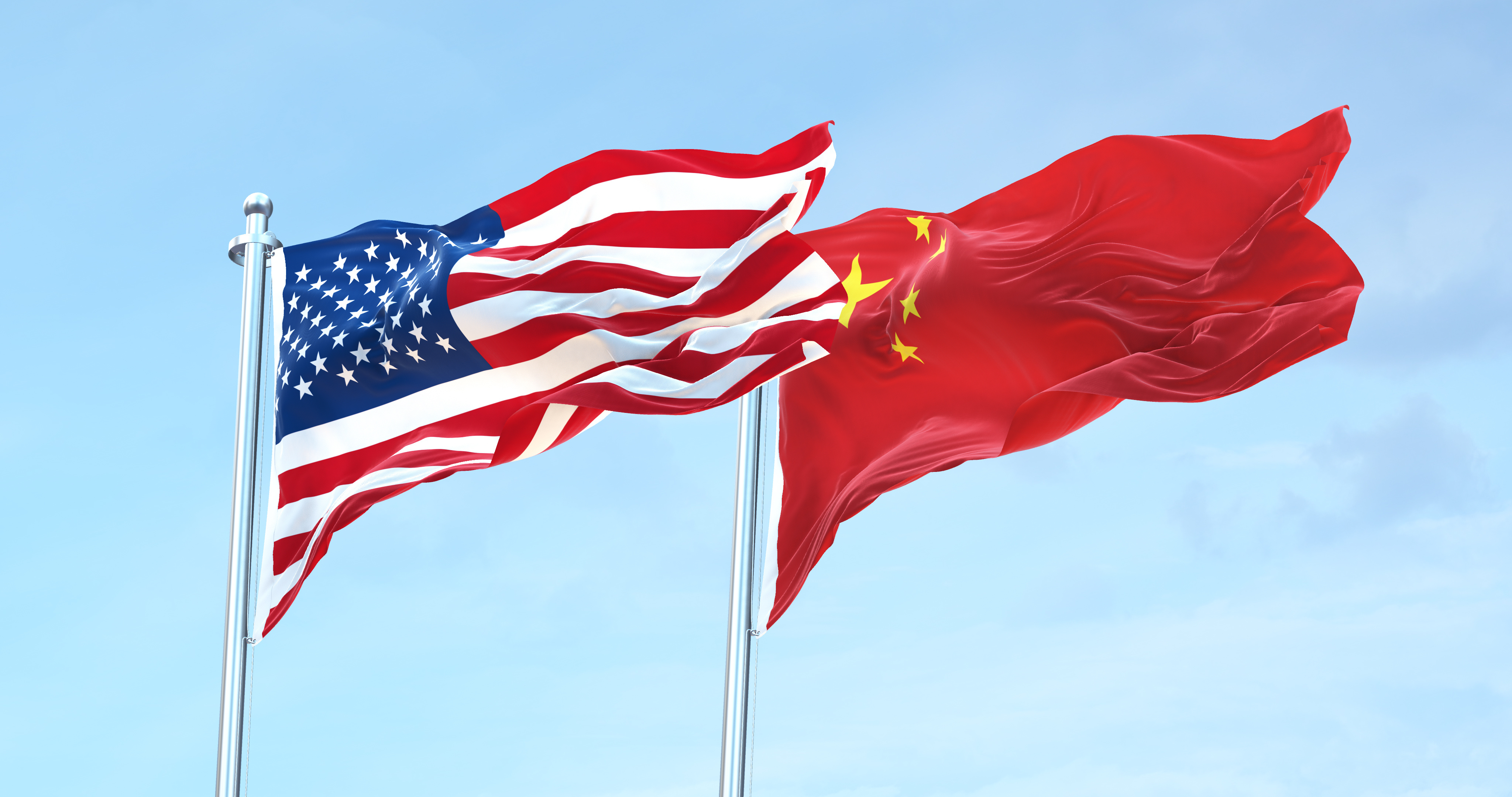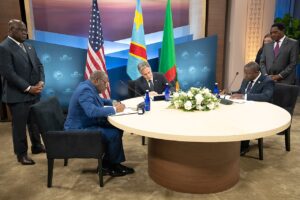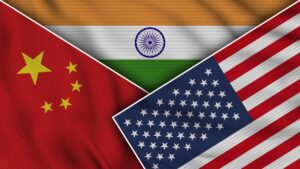The Red cell project
The Red Cell was a small unit created by the CIA after 9/11 to ensure the analytic failure of missing the attacks would never be repeated. It produced short briefs intended to spur out-of-the-box thinking on flawed assumptions and misperceptions about the world, encouraging alternative policy thinking. At another pivotal time of increasing uncertainty, this project is intended as an open-source version, using a similar format to question outmoded mental maps and “strategic empathy” to discern the motives and constraints of other global actors, enhancing the possibility of more effective strategies.
The policy discussion on national security has devolved into a debate about how to wage a narrow bilateral struggle against China. Indeed, some have described the U.S. fixation on China as a “fever.”
This approach is misplaced. Although China does pose the most serious threat to the United States — and to its allies, interests, and values — by fixating on the bilateral competition, Washington plays to China’s strengths and minimizes its own advantages. The United States would be more effective in countering China by focusing the bulk of its effort on the rest of the world rather than on China itself.
The current fixation on China also risks repeating the mistakes of the past. One of the critiques of the United States during the Cold War was that Washington too narrowly focused on the Soviet Union and underplayed the world’s emergence from decolonization. This led to applying “containment” where it was inappropriate. As the Cold War developed, the United States underappreciated nationalism and approached every conflict as a zero-sum struggle against communism. The poster child for this policy and its challenges was Vietnam, but there were other examples, such as Angola and Chile. The United States often downplayed local circumstances and issues and sought expedient — often repressive — allies for support in Washington’s rivalry with Moscow. This allowed the Soviets to gain advantage as champions of the newly independent nations, especially in the 1950s and 1960s. This pattern played out again after 9/11. Washington pursued a national security strategy that myopically focused on counterterrorism, to the detriment of broader U.S. national security interests, including the need to counter the rise of China.
The rest of the world increasingly matters
Other countries are major actors. Today, by overemphasizing the bilateral competition with China, the United States is underplaying the importance of the rest of the world — the playing field for great-power competition. Moreover, many countries other than the United States have real power and agency. In the 30 years since the end of the Cold War, the European Union has emerged as a potent, collective actor that shares many of the same policy goals and values as the United States. Just as notable, other countries have emerged as increasingly wealthy and powerful actors that want to maintain autonomy between the United States and China. Such countries include Brazil, India, Indonesia, Saudi Arabia, and Turkey (despite being a NATO member). The rise of these states is a geopolitical shift that has altered global balances as much, if not more, than China’s emergence as a peer competitor to the United States. By overly fixating on the narrow bilateral competition with Beijing, Washington is ignoring these geopolitical shifts, potentially allowing China to exploit them — as it has been attempting to do, for example, via such efforts as the Belt and Road Initiative.
Serious global threats persist. Some in Washington, especially at the Department of Defense, might want to focus largely on China as the “pacing threat,” but China is not the only serious threat facing the Unite States, as the Russian invasion of Ukraine makes abundantly clear. Beyond Russia’s direct threat to NATO and the United States, Iran and North Korea continue to threaten the United States, as well as its allies and key interests. At the same time, Salafi-jihadist terrorism persists in Iraq/Syria and East/Sahelian Africa and could re-emerge as a major threat in South Asia after the Taliban’s victory in Afghanistan. Too much focus on the military threat posed by China could place Washington in the position of planning for an unlikely war while ignoring more likely contingencies — as the United States did during the Cold War, when its forces were not properly equipped or trained for unconventional operations throughout Asia, the Middle East, Africa, and Latin America because they had been preparing for large-scale combat with the Soviet Union.
Global politics are changing. A narrow focus on bilateral competition also ignores the growing power of nonstate-based actors, including multilateral organizations, large companies, and nongovernmental organizations. If the rise of middle powers and the rise of China were the two major global shifts during the last 30 years, then the third was the emergence of organizations not subordinate to any nation-state with real wealth and power, such as Big Tech. By fixating on China, Washington is overlooking the opportunity to strengthen the emergence of constructive nonstate actors in global politics, thereby reducing the potential to strengthen the liberal, rules-based international order as a counterweight to China and its authoritarian model.
Competing under China’s rules underplays U.S. advantages
As an authoritarian one-party state, China clearly has a greater potential than the United States to marshal whole-of-nation resources to focus on a narrow set of issues. Beijing can develop and execute centralized top-down plans, while the United States must operate within its open, democratic polity, with free markets, a strong civil society, prioritization of individual rights and empowerment, and governance by rules and laws that restrict state power. By overly focusing on competition with China, Washington is shaping its national security strategy around Beijing’s authoritarian preferences, not the United States’ more flexible and open democratic, rules-based system that has evolved in recent decades. Beyond affecting the bilateral balance, this approach also tends to reinforce Beijing’s authoritarian “brand” diplomatically.
The U.S. alliance system is the single most important advantage the United States has relative to China.
A decade ago, there were proposals for a “G-2″ — whereby the United States and China would reach some sort of modus vivendi for global governance. The Obama administration ultimately demurred as the rest of the world had power and agency, and the United States sought to strengthen the rules-based order where rules should restrict state action, benefit individuals, and not be based purely on power. Today, by fixating on China, Washington has de facto adopted the G-2 framework, in effect, helping to elevate Beijing’s global stature.
Leveraging U.S. advantages would benefit U.S. interests
The United States has several key advantages over China, including the alliance system; its longstanding relationships with most countries in the world; and increasing globalization, which the United States has nurtured.
Allies and partners should be the center of U.S. strategy. The U.S. alliance system is probably the single most important advantage the United States has relative to China. Its strength is based upon the web-like structure of multiple, overlapping ties, close integration, and shared perceptions. Throughout the Cold War, Washington’s allies and partners were essential to deter and defend against the Soviet Union, counter regional threats, and address violent instability. During the so-called unipolar period, the United States needed allies to combat al-Qaida and the self-styled Islamic State (NATO and Australia both invoked the mutual defense provisions to aid the United States in response to 9/11), counter regional threats (Iran, Iraq, North Korea), and address post-Cold War instability (e.g., the Balkans, several places in Africa, East Timor). Today, as the United States faces a peer competitor — China — a direct threat from Russia, two regional threats, and persistent terrorism, Washington’s allies have become more important to U.S. national security.
The United States cannot provide for its security and prosperity on its own. It lacks the capacity. In terms of the basic raw indices of national power (using a classic, 19th-century realist concept of the world), the United States cannot counter China, much less Russia or other regional threats, absent like-minded allies and partners. Combining U.S. capabilities with those of U.S. allies and partners shifts this equation substantially in the United States’ favor. This includes U.S. mutual defense allies (NATO, Japan, Australia, New Zealand),1Note: New Zealand was suspended from ANZUS, and South Korea is focused on North Korea, but both often operate as U.S. allies. as well as large countries like India. All provide the essential foundation for U.S. national security.
The United States needs to adapt its alliances and partnerships to counter China. The United States has an opportunity to build on its long history of relationships with allies and partners around the world. The general (if imperfect) U.S. practice of treating other countries as equal sovereign states contradicts China’s preference for dividing countries into two groups: those that are hostile or those that must accept some form of tributary relationship to Beijing.2Note: Analysts and historians will correctly note many exceptions to the above assessment of U.S. policy, such as the 2003 Iraq invasion. However, this example, and the damage it caused, only reinforce the importance of avoiding such actions in the future and instead setting China up to reap the pushback from its own unilateralism and bullying. Nevertheless, the United States needs a more expansive and flexible concept of allies and partners to encompass a wider array of countries and multilateral forums that reflect changing global dynamics. Washington cannot afford to adopt a “you’re-with-us-or-against-us” framework with the roughly 190-plus countries in the world. Despite the diplomatic effort and strategic patience required, the United States should approach alliances and partnerships flexibly, realizing that these are two-way (or more) relationships with countries that have their own perspectives, goals, and interests, which often involve concerns other than China. Some important informal partners, India, for example, seek to avoid treaties and might pursue other policies opposed by Washington. Other neutral organizations, like ASEAN or the African Union, are focused on regional development and security, and they will require extra levels of engagement because of their consensus-based nature.
The United States should make building alliances and partnerships the central focus of its national security policy and a strategic end in itself, not just as an instrumental tool against China (or Russia). The aim is to build a thick web of relationships that can be adapted to address the myriad threats and challenges and leverage opportunities to the United States’ collective benefit and at the same time provide a strong counterweight to China.
Washington will also need to adapt the “geometry” of alliances as important groupings outside formal U.S. defense alliances — such as the EU, Quad, and ASEAN, for example — become more important. Also, recognizing that the United States now has less power and wealth relative to some allies and partners, U.S. policymakers need to cede some decision making to other allies. This has occurred to a limited degree in the Indo-Pacific, where Japan stepped up to save the Trans-Pacific Partnership after the United States withdrew.
Globalization is a key U. S. advantage. Though patterns are changing, globalization has proceeded apace and has extended into realms well beyond trade and business. In particular, the development of modern telecommunications, especially the internet, space satellites, and transport technology (e.g., jet aircraft, modern shipping) have integrated countries, societies, and peoples globally in ways unparalleled in history.
By narrowly focusing on countering China, Washington is diverting attention from nurturing a more globally connected world, undermining a key U.S. advantage. China’s paranoid fears of the internet reflect Beijing’s concerns that openness, globalization, and interconnectedness are among its critical vulnerabilities, and by extension a U.S. advantage.
By narrowly focusing on countering China, Washington is diverting attention from nurturing a more globally connected world, undermining a key U.S. advantage.
The United States needs to match its policies and programs to its stated goals as expressed in the “Free and Open Indo-Pacific” strategy. Washington should emphasize greater global openness and interconnectedness as central elements of its national security strategy. The United States retains considerable worldwide appeal, as evidenced by the sustained effort of tens of thousands to migrate to the United States and improvements in most global perceptions of the United States post-Trump. Washington can leverage this key strength, while avoiding overbearing triumphalism.
The United States can choose and shape the competition space
U.S. strategy toward China should be grounded in the world that has developed since the end of the Cold War — multiple states and organizations with greater wealth and power and dramatically increased global connectedness — and not just focus on China’s rise. These factors play to U.S. advantages and reinforce broader U.S. goals of building a liberal rules-based international order. Military commanders often say that the side that chooses the battlefield has an advantage. National security strategy is no different. Consequently, the United States should maximize its global and alliance advantages — its playing field — rather than play on China’s field of a command society that is trying to bend the world to its will. Moreover, beyond improving the U.S. capability to counter China, Washington can reduce the chances of a bruising bilateral slugfest. Not only would such a slugfest advantage China, but it might lead to escalation if each side ups the ante merely to punish the other. At a certain stage this could become kinetic, with attendant costs and potential nuclear use.
Harry I. Hannah is a retired Central Intelligence Agency officer. During his 34 years in the intelligence community, he worked on a variety of intelligence issues, including with CIA’s Red Cell. CIA approval of the publication of this brief does not represent endorsement or verification of this work.
Notes
- 1Note: New Zealand was suspended from ANZUS, and South Korea is focused on North Korea, but both often operate as U.S. allies.
- 2Note: Analysts and historians will correctly note many exceptions to the above assessment of U.S. policy, such as the 2003 Iraq invasion. However, this example, and the damage it caused, only reinforce the importance of avoiding such actions in the future and instead setting China up to reap the pushback from its own unilateralism and bullying.




